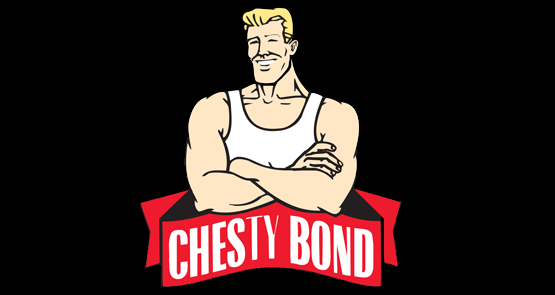The relentless decline of once-great clothing manufacturer Pacific Brands is one of the sadder stories in corporate Australia.
PacBrands chief David Bortolussi, the long-standing chief financial officer who took over from former Foster’s Group boss John Pollaers after a boardroom split last year, put out a creditable set of figures on Tuesday morning as he tries to engineer a turnaround and generate some earnings growth. The shares nudged a little higher today, up 1 cent to 47 cents, even as PacBrands posted another net loss after tax of $109 million in the six months to the end of 2014, marred by non-cash impairments of some $136 million to the fair value of brands like Rio and Holeproof, which are being hammered by house brands.
Encouragingly, total revenue was up 6% in the half to $392 million, driven by double-digit growth in sales of the two key brands that remain within PacBrands: Bonds alone generates half the company’s sales — and celebrates its 100th anniversary this year with a major new advertising campaign — and Sheridan represents another quarter of sales.
Apart from Bonds and Sheridan, though, the outlook is pretty bleak following years of cost-cutting and the sale last year of iconic brands like Hard Yakka and King Gee (part of the workwear division sold to Wesfarmers) and Dunlop Volley (sold as part of the Brand Collective portfolio in December) to reduce debt, which is now under control. Bortolussi confirmed PacBrand’s second-half earnings were unlikely to exceed the first half.
The over-riding problem is that PacBrands’ 2009 decision to offshore manufacturing to China has put the company on the wrong side of Australia’s falling currency, notwithstanding the delaying effect of hedging policies.
PacBrands still gets two-thirds of its revenue as a wholesaler and now faces margin pressure in the cut-throat clothing business as it buys product largely in US dollars, forcing it to raise prices to Australian trade buyers, while also trying to grow higher-margin retail sales through higher-margin channels like online and Bonds stores, which are rolling out ASAP.
So while many manufacturers are finally getting some relief from the weaker Aussie dollar, which is forecast to stay below 80 cents, PacBrands is battling as Macquarie’s analysts wrote last month, concluding that PacBrands was still overvalued:
“We are positive on the changes made at Pacbrands and the business composition following the divestment of Workwear and Brand Collective. However we cannot build a positive investment case for a wholesaler in light of further currency headwinds in 2015-16”.
None would be more conscious of this turn of the tables than Sue Morphet, the controversial former PacBrands CEO who bit the bullet and closed the company’s seven Australian factories — with the loss of 3000 jobs on the floor and at head office — and helped spark a Productivity Commission inquiry into executive remuneration (see page 48 for a summary) by simultaneously rewarding management with pay rises of up to 170%. Treasurer Wayne Swan described PacBrands’ pay practices as “frankly sickening”, and then-PM Kevin Rudd said they were “beyond the pale”, although governance advisers like RiskMetrics said Morphet, who was promoted internally to the CEO’s role at a lower pay than her predecessor, was targeted for unfair criticism.
Morphet, ironically, now chairs Manufacturing Australia and is lauded in some quarters for the hard-nosed, “no sacred cows” decisions she took at PacBrands. Perhaps the Australian factories — which by 2009 only accounted for 30% of product sold — had no future and would have remained uncompetitive regardless. That is certainly the view of the company: a spokesperson said the offshoring was the right decision at the time, and there would not be a PacBrands today if those decisions had not been taken.
However, critics, including highly regarded retail analyst David Errington, branded Morphet’s strategy a failure. PacBrands has racked up some $1.3 billion in write-downs, and the market value of the company has more than halved from $1.1 billion in 2008 to some $430 million today. Morphet declined to be interviewed for Crikey‘s story.
Not so her old foe Michele O’Neil, national secretary of the Textiles, Clothing & Footwear Union, who told Crikey PacBrands’ offshoring “was always an ill-thought-out strategy. They had not properly worked out their sourcing arrangements. It was well known that the decision was made without them having good-quality reliable suppliers in place. There were many problems in terms of delivery and quality that flowed from the rapid move from local to overseas manufacturing.”
“They lost a huge amount of consumer goodwill and commitment to the brands. They were such iconic brands. The degree of outrage around the loss of jobs and the treatment of those worked did flow through to sales and to consumers views of those brands and that’s had a long-term impact,” she said.
“Consumers aren’t mugs. You can’t build brands around iconic Australian imagery and then sack a 2000-strong workforce and expect consumers not to notice.
“I don’t know this empirically, but I understand the other thing that was clear to consumers was that they didn’t see a commensurate price drop.”
PacBrands maintains that, even with the dollar at 75 cents, local manufacture would not be profitable. O’Neil does not accept that for a minute: “They will never admit their sales took a hit as a result of that decision. If they factored that in, then of course there would be an argument that the clothes could be made here at a profit.”
She believes at least a few of the local factories could have been saved. “Some of the sites had been involved in quite detailed work on restructure and their own profitability. There’d been extensive improvement and change programs, which the company had then reported back to the workforce as being successful. They were being told, ‘This is a profitable factory, we’re competitive’. So when they announced overnight all seven were closing, it didn’t ring true.”
O’Neil says she bumps into former PacBrands executives from time to time, including recently at an airport. “I get quite a lot of information from ex-bosses. They always spill the beans on what a bad decision it was.”
What is clear is that shutting and cutting and selling off brands has not proved a path to greatness for PacBrands. There have been no winners at all — not shareholders, not workers, not even consumers, only management — and the company’s future remains as diabolically uncertain as ever.









Amongst the various experts giving opinions on whether or not Pacific Brands has been the victim of bad management decisions there is absolutely no mention of their products – or, more specifically, the quality of their products.
Sheridan, as a superior brand, is a shadow of its former self – none makes its way into this household any more. As for Jockey underwear, our old gear is still usable whereas the replacements seem less hardy even when new.
Perhaps Pacific Brands’ product development people can explain why so much of the underwear is synthetic or synthetic blend rather than pure cotton for the hot Australian climate. Would a slide in quality explain why consumers are turning elsewhere? That, along with the offshore arrangements, were sufficient to lose me.
That’s right, she described closing the Australian factories and sacking the 3000 employees as “Cleaning out the clutter” it was at that moment I decided never to buy their products again.
The basic problem for Pacific Brands is that they used to manufacture quality garments, now they import cheap, low quality goods from overseas. There is now no reason for customers to buy Pacific Brands house labels as they are just the same as any other discount clothing.
Great article Paddy. As already mentioned above, I and many others I know haven’t knowingly brought a branded item from this company since they first announced the off shoring and subsequent closures. The pay rises to the executives was just icing on the cake and a further symptom of excessive rewarding of executives (in general, but particularly those in senior or C suite positions) for extremely dubious management at the expense of shafted workers.
Pacific brands did come very close to the brink – they hit a low of 14 cents a share in early 09. The previous board seemed to only know how to grow through overpriced acquisitions, financed with debt over the previous 10 years, saddling the company with a massive overhang of intangible assets (the goodwill that has been written down progressively over the last 5 years) and costly sort-term debt. This strategy was doomed to fail. If you are looking to blame any CEO for the Australian plant closures, blame Paul Moore and his mates who were in control for 9 years leading up to the crash (and who pocketed healthy bonuses on the way up).
Pacific Brands was going to hit the wall at the first sign of a slowdown, and assets were bound to be sold off or rationalised.
In response to the closures, the share price of PBG went up ten-fold from the March low in about 6 months. Point me to a listed company that does not link executive remuneration to shareholder return. In that context, the pay rise is entirely in line with common practice. If the market incentivises short-term gains, then short-term gains is what you get.